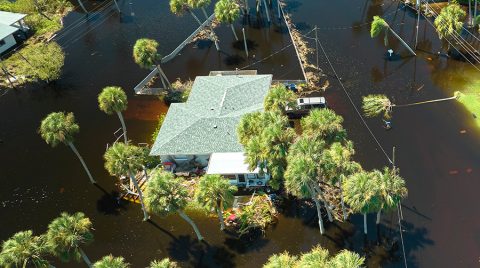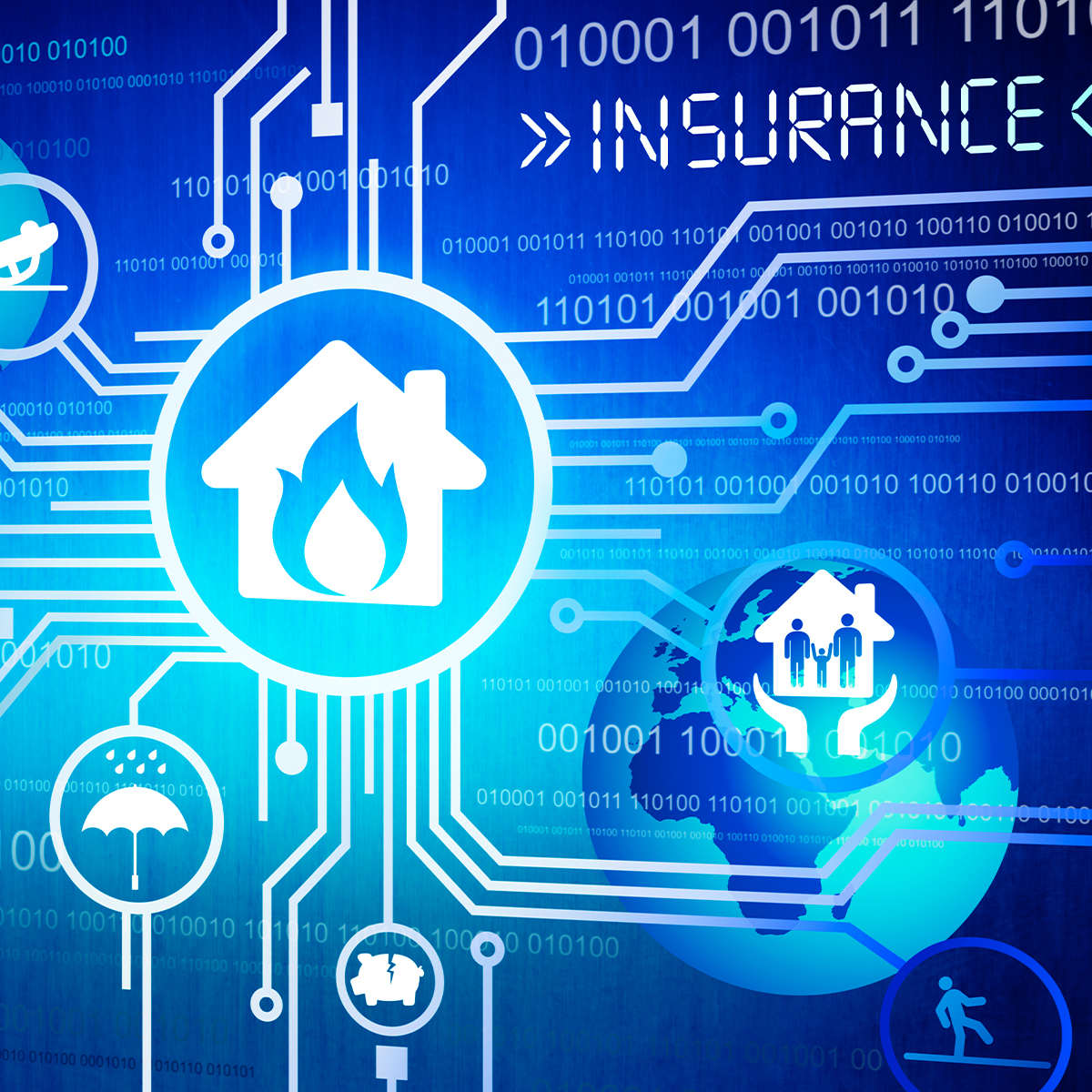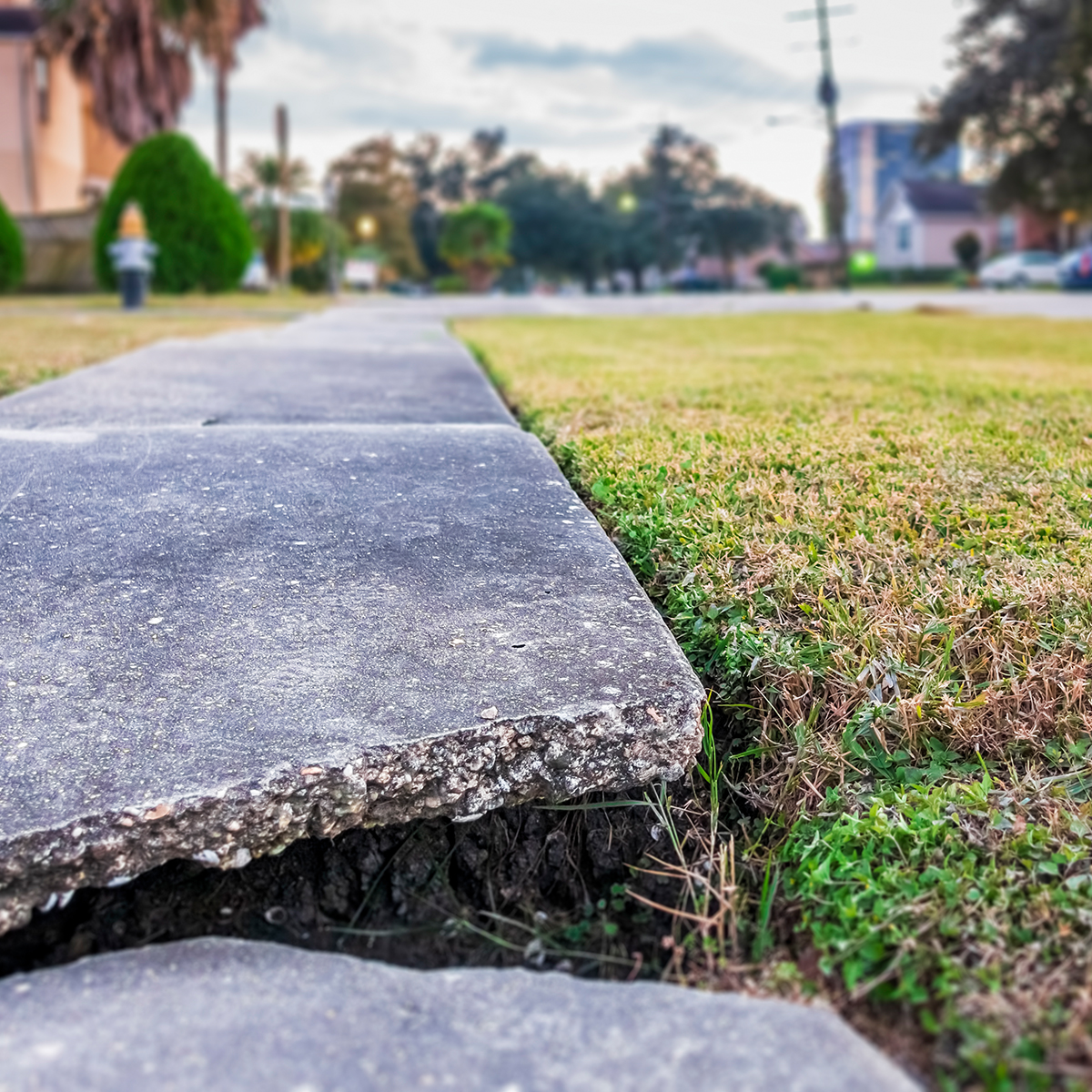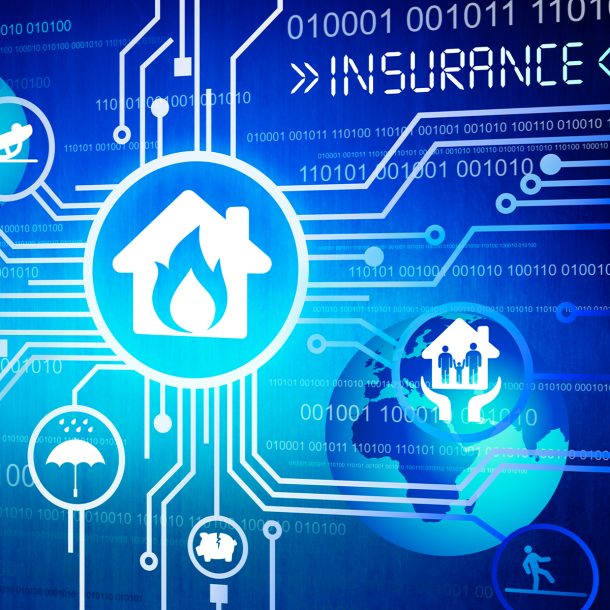-
Property & Casualty
Property & Casualty Overview

Property & Casualty
We offer a full range of reinsurance products and the expertise of our talented reinsurance team.
Trending Topics
Publication
Engineered Stone – A Real Emergence of Silicosis
Publication
Use of Artificial Intelligence in Fire Protection and Property Insurance – Opportunities and Challenges
Publication
Generative Artificial Intelligence and Its Implications for Weather and Climate Risk Management in Insurance
Publication
Public Administrations’ Liability – Jurisprudential Evolution, Insurance Implications, and a Comparative Analysis Across Countries
Publication
Risk Management Review 2025
Publication
Who’s Really Behind That Lawsuit? – Claims Handling Challenges From Third-Party Litigation Funding -
Life & Health
Life & Health Overview

Life & Health
We offer a full range of reinsurance products and the expertise of our talented reinsurance team.
Training & Education
Publication
AI Agent Potential – How Orchestration and Contextual Foundations Can Reshape (Re)Insurance Workflows
Publication
Diabetes and Critical Illness Insurance – Bridging the Protection Gap
Publication
Group Medical EOI Underwriting – Snapshot of U.S. Benchmark Survey
Publication
Why HIV Progress Matters
Publication
Dying Gracefully – Legal, Ethical, and Insurance Perspectives on Medical Assistance in Dying Moving The Dial On Mental Health
Moving The Dial On Mental Health -
Knowledge Center
Knowledge Center Overview

Knowledge Center
Our global experts share their insights on insurance industry topics.
Trending Topics -
About Us
About Us OverviewCorporate Information

Meet Gen Re
Gen Re delivers reinsurance solutions to the Life & Health and Property & Casualty insurance industries.
- Careers Careers
Use of Artificial Intelligence in Fire Protection and Property Insurance – Opportunities and Challenges

August 21, 2025
Leo Ronken
English
Deutsch
The integration of artificial intelligence (AI) into safety-relevant applications has increased considerably in recent years, including in the areas of fire protection and property insurance. The application of artificial intelligence opens new possibilities for risk identification, assessment, and minimization, as well as for more efficient claims settlement. AI‑based technologies – such as machine learning, image and speech recognition, or sensor-based data analysis – enable the automated evaluation of large volumes of data from a wide variety of sources in real time. These sources include sensor data, weather information, and building structures and thus support both the early detection of potential hazards and refining projected loss probabilities. This promises a significant improvement in monitoring and response mechanisms. Examples of these improvements may be through learning algorithms to detect fire incidents or adaptive control of fire protection systems.
In addition, AI enables the optimization of insurance processes, thus new forms of pricing, claims settlement, and fraud detection can be developed alongside more precise claims analyses.
This article presents examples of the potential for and challenges of using artificial intelligence in fire protection and property insurance. Both technological and economic aspects are considered, thereby offering a comprehensive understanding of the opportunities and challenges of using AI in this context.
Artificial Intelligence
The term artificial intelligence (AI) refers to the development of computer algorithms and systems based on artificial neural computer networks that make it possible to interpret different data sources such as images, sounds, texts, tables, or time series, and to extract information or patterns from those data sources to apply them to unknown data. Artificial neural networks are the central element in deep learning (particularly deep network structures). They are able to perform tasks that would normally require human intelligence. The term AI comprises a variety of technologies and methods, in particular:
- learning from data (machine learning)
- natural language processing (natural language processing)
- image recognition (computer vision)
- autonomous decision-making
AI algorithms can, for example, recognize patterns, understand language, make decisions, solve problems, and learn and improve independently; that is, AI systems have at least a certain degree of autonomy, adaptability, and ability to draw conclusions. The effectiveness of AI systems depends largely on the quality and quantity of the available data, which must be data protection compliant, particularly with regard to the EU General Data Protection Regulation (GDPR).
Possible uses of AI in Fire Protection
Smart buildings are increasingly being equipped with a wide range of intelligent, AI‑supported infrastructure control technologies and networked with each other. In AI‑supported smart buildings, for example, AI takes over the analysis and evaluation of incoming data streams and the control of necessary measures, such as triggering a fire alarm in the event of an incipient fire, activating fire protection equipment (fire dampers, fire protection closures, smoke and heat extraction systems), and initiating evacuation measures. Other examples include video surveillance systems that use AI technology to detect smoke development or systems that dynamically enable safe evacuation routes depending on how the fire develops.
The application of artificial intelligence thus presents opportunities to detect fire hazards at an early stage and to automate corresponding follow‑up processes such as alerting and initiating firefighting measures. AI‑supported systems can be used in both preventive and defensive fire protection.
Preventive Fire Protection
The primary task of preventive fire protection is to prevent fires from starting and to limit their spread through structural, technical, and organizational measures. In fire protection, AI‑supported systems can evaluate sensor data, environmental variables, and historical events and can detect unusual heat patterns or smoke development through a network of highly sensitive sensors, thermal imaging, and monitoring cameras. Such systems can also evaluate air quality measuring devices and detect problems before they become perceptible to humans or conventional sensors. This means that overheated appliances, faulty electrical installations, or unusual smoke emissions can be identified automatically. Since these predictive systems detect fire hazards at an early stage and initiate preventive measures, they can facilitate a reaction even before the damage event occurs and thus make a significant contribution to increasing safety standards.
Possible areas of application for AI‑supported systems include the following:
- Early fire detection through intelligent sensor technology, in that AI‑based systems distinguish faster and more reliably than conventional fire detection systems between real fire events and dust and smoke development through operational processes by analyzing data from patterns and contextual information from thermal imaging cameras, gas sensors and smoke detectors. This early, more reliable detection reduces false alarms. Early detection improves response times for emergency services and fire protection systems, and can significantly reduce or even prevent damage. AI‑supported early fire detection systems are currently being used in areas of companies that are exposed to wind, moisture, high temperatures, and/or dust.
- Fire risk modeling and scenario analysis of complex correlations such as from building, process, and claims data, which are difficult to capture using conventional methods. This modeling and analysis are preferably used in the context of fire protection planning (AI‑supported simulations) in virtual space using information from various sources such as building structures, electrical installations, historical fire data, and weather conditions. In the context of Building Information Modelling (BIM), such optimized and efficient building construction designs can be created through consideration of applicable building and fire safety regulations, potential fire hazards and scenarios, and simulation of the structures’ behavior over their life cycles from implemented data obtained from networked sensors.
- Maintenance planning controlled by AI can monitor safety-relevant systems such as fire detection or firefighting systems for early detection of potential failures or patterns that may indicate an imminent need for maintenance (predictive maintenance). This helps installation and maintenance personnel, among others, to identify and eliminate potential faults at an early stage before they can cause damage or system failure.
Defensive Fire Protection
In defensive fire protection, AI can significantly influence and optimize operational planning, firefighting, decision-making, and coordination during a fire incident. Examples of such optimization include the following:
- Real-time analysis of the operational situation (e.g., by evaluating sensor and building data as well as weather information) and deriving recommendations for action (e.g., propagation forecasts), prioritization of endangered building areas, determining the best method for firefighting, and determining the optimal route for firefighting vehicles, (i.e., taking into account traffic and road conditions, the necessary resources such as firefighting vehicles, personnel, and equipment, the fire location and the firefighting strategy). This includes determining the best evacuation routes for people with dynamic signage, mobile warnings, and automatic control of doors, elevators, and ventilation systems.
- Drone and robotics support using AI‑controlled drones for situational awareness (e.g., to localize sources of fire or search for people).
- Support in claims assessment by evaluating data from various sources (e.g., thermal imaging or drones) to help restore the company’s operational readiness, process the damage, and gain insights for future preventive measures.
- AI‑supported simulations of and training for possible realistic operational situations for emergency services by analyzing historical data and real-time information to optimize the distribution of resources such as firefighters and equipment.
- Automated emergency response and management through autonomous activation of alarm systems, activation of automatic firefighting equipment, and other measures (e.g., control of air conditioning/ventilation and smoke and heat extraction systems as well as fire doors and dampers).
- Optimizing the performance of firefighting systems such as sprinklers and extinguishing monitors by dynamically adjusting the water output controlled by AI algorithms in real time, activating the extinguishing areas, and optimally distributing the extinguishing water (e.g., for more effective firefighting and minimizing water damage in relation to the actual fire dynamics). Optimization of firefighting systems also supports the firefighters working in hazardous zones and environments or in places that are difficult to access. Among the advantages of optimizing adapted extinguishing tactics, less damage from the fire extinguishing process can be expected.
AI‑based fire protection systems currently solve individual problems. Further developments are essential to consider additional structural, technical, operational, and organizational fire protection measures. In the future, improved sensor technology and data analysis are expected to increase the accuracy and reliability of AI‑based fire protection applications. In addition, robots that can be used autonomously in dangerous/inaccessible environments to fight fires will be used and AI‑based technology and systems will be integrated into a comprehensive safety strategy to ensure maximum safety (e.g., fire protection, intrusion protection, surveillance) and combat multiple potential threats.
Possible Applications of AI in Property Insurance
The integration of AI into fire protection and property insurance marks a profound technological change with far-reaching implications for prevention, risk management, and customer experience. Until now, insurance exposure has been determined largely based on human intuition, experience, knowledge, historical data, actuarial tables, and numerous statistical analyses. It is a cumbersome and time-consuming manual process, characterized by risk assessment, reporting, valuation procedures, and premium pricing. It involves the inherent problem that the availability of historical data is limited by technological changes and environmental processes, and only allows limited predictions to be made about the loss burdens from catastrophic events.
Continuous collection, linking, and reconciliation of all available data in real time (e.g., loss data, IoT device feeds from the increasing number of networked equipment under the “Internet-of-Things” phenomenon, social media activities, financial documents, weather reports, satellite images) can identify individual, existing risk potentials and develop tailored coverage concepts. AI‑driven processes allow patterns and correlations of structured/unstructured data to be recognized to make a more dynamic and accurate risk exposure assessment and thus make more efficient / risk-adequate decisions. Furthermore, technological and environmental changes in risk assessment as well as coverage concepts and insurance premiums would be adapted to the individual needs of each policyholder and the existing situation. Additional advantages lie in the simulation/prediction of possible losses (e.g., catastrophe scenarios) for better individualization of the insurance premium and coverage concepts, and better traceability and rationalization of the decision for the policyholder. Forecasting capabilities and risk management practices for better strategic allocation of capital and resources can also be improved to minimize potential losses for insurers.
Example of Risk Assessment and Premium Calculation
The central elements of property insurance are the determination of exposure and an adequate premium based on that determination with regard to the perils insured in the insurance contract, such as damage from fire, explosion, lightning, or water. Traditionally, this assessment is based on standardized risk models, historical loss statistics, and actuarial methods.
The application of AI opens up new possibilities for more precise, dynamic, and customized risk assessment. Compared to traditional methods, the large amount of process and claims data collected (e.g., telematics and sensor data) allows more complex patterns and nonlinear relationships to be considered. This feature enables the analysis of a wide range of additional risk indicators (including geo, environmental, and plant data) and their interactions, all of which can be analyzed automatically and simultaneously. The result is more accurate exposure models. These models can be updated continuously based on newly added risk data, such as changes in the system status of machines and plants, changes in usage, or changes in environmental data.
Consequently, it becomes possible to dynamically adjust the necessary insurance premium to the respective risk situation and the associated potential hazards. Concurrently, it becomes feasible to differentiate more distinctly between risks of the same type of operation but with different buildings, infrastructure, and safety structures. This approach enhances the precision of risk assessment. Risk modeling also facilitates the optimization of the allocation of underwriting and reinsurance capacity.
Alongside the advantages afforded by AI, however, are also a number of challenges: AI models and algorithms are generally very complex, and their results are difficult to comprehend. There are also regulatory, data protection, and ethical challenges, as personalized sensitive data can lead to discrimination in risk assessment. In addition, the risk models must be regularly reviewed and adapted to new risk situations.
Example: Personalization of insurance services through AI
The use of artificial intelligence to personalize insurance services In the property insurance sector, there is an increasing demand for policies that are customized to the specific risks and needs of individual policyholders, rather than relying on standardized coverage concepts. It is also essential for policies to be adapted more quickly and flexibly to changes in the risk situation.
AI technology offers the possibility of creating individual risk profiles by evaluating existing data (e.g., object and process data, geodata) and matching desired insurance services to an existing risk situation. This allows us to provide a customized and cost-effective insurance solution tailored to your specific needs and risk profile, ensuring you're not over- or underinsured. The following list contains some possible forms of design:
- Dynamic Rate Structure
Premiums are based on the actual use and behavior of the policyholder (e.g., through IoT sensor technology in buildings or regular maintenance records). - Adaptive Policies
Automatic adjustment of insurance requirements or options for improved insurance cover (e.g., when purchasing additional machinery or adding new operating processes). - Recommendation Systems
Determination and suggestion of tailor-made insurance cover by the insurer based on historical customer data or comparable risk situations in an insurer’s portfolio. - Customer Segmentation
Proposal and creation of economically interesting and individualized offers for a specific risk group by identifying and clustering homogeneous risk groups.
Challenges of Using AI in Fire Protection and Property Insurance
Although the use of artificial intelligence in fire protection and property insurance offers a wide range of advantageous opportunities, there are significant challenges associated with it. They can be summarized as follows:
- Data Availability and Quality
The performance of AI models depends largely on the availability of large, high-quality data volumes. There is often a lack of standardized and accessible data pools, particularly in the fire protection sector. It is possible that the reliability and accuracy of AI systems will decrease due to the increasing complexity of the technology, technical components, and networking. - Transparency and Explainability
Many AI models, especially deep learning approaches, act as so‑called black boxes and do not provide a directly comprehensible basis for decision-making. Their decisions are difficult to understand for policyholders, regulators, supervisory authorities, and internal specialist departments, and sometimes also for developers. This potentially leads to a loss of verification options and is therefore beyond human control. - Regulatory and Data Protection Requirements
The use of personal data requires compliance with relevant data protection regulations (e.g., GDPR). This includes consent management, data use within the scope of purpose limitation, legitimate interest in data use, storage limitation, and compliance with the principle of data minimization, as well as the establishment of technical protection measures such as pseudonymization, monitoring, and access control. In fire protection, the question arises as to the extent to which continuous data collection encroaches on private living space (i.e., data may be procured through video analytics, motion detection, or smart home sensors). These concerns require considerable effort to comply with existing standards and data protection rules and laws; they may require adaptations to country-specific circumstances, regulations, laws, and customs. - Discrimination Risks and Unreliable / incorrect Autonomous Decision-Making
Missing or imperfect data, dubious data origin and data preparation as well as faulty algorithms or programming or insufficient or inadequate networking of data and applications can lead to distortions and discrimination, and thus to improper, biased, and unfair decisions by AI systems. In the context of insurance, this can lead to disadvantageous risk selections or premium models, exclusions of certain risks, or incorrect conclusions and decisions in fire protection. - Acceptance by Customers and Employees
The introduction of AI‑based systems requires trust in their fairness and functionality. Policyholders may perceive automated decisions as non-transparent or impersonal. Also, increased demands on employees as they learn additional skills related to the development and use of AI technologies may undermine their acceptance. - System Integration and Interoperability
The current problem for AI applications is that an extremely large amount of data is required to recognize the respective expected situations. New situations that have not previously been recognized and learned by AI must be recorded and trained from scratch with the system parameters. Existing IT infrastructures in insurance companies and fire protection systems have often grown historically and are heterogeneous. The integration of AI‑based components into existing processes therefore requires comprehensive interface development and compatibility checks, if not completely new systems. - Lack of Specialist Expertise
The development, implementation, and maintenance of AI‑based systems require interdisciplinary expertise in the fields of data science, IT security, actuarial mathematics, and specialist process understanding. The lack of suitably qualified technical experts, software developers, and data scientists in fire protection/AI and property insurance, for example, is currently a key hurdle. - Resistance to Change
The introduction of new technologies changes employees’ roles, responsibilities, and work processes. Without active change management, the demands of such changes can lead to resistance among the workforce, especially if employees are unable to understand the benefits of AI or are afraid about their own job security. - Governance and Accountability
AI systems require new structures of responsibility and supervision. It must be clearly defined who is liable for the decisions and actions of algorithmic systems (e.g., software and system developers or users). This applies to systems that work well and, importantly, to incorrect predictions or accusations of discrimination. - Cultural Transformation
The successful integration of AI is not just a question of technology, but also one of corporate culture. Openness towards data-driven decisions, acceptance of errors, and a learning-oriented attitude must be specifically promoted. - Insurance Supervisory Law
Insurance supervisory law (e.g., VAG, Solvency II) also places requirements on the implementation of new technologies. For example, the use of AI in a property insurance company must be proportionate to the insurance risks and must not jeopardize financial stability. Furthermore, insurance companies must have an appropriate corporate organization that also controls the use of algorithmic systems (e.g., internal control systems, compliance structures, IT risk management). - Cyber Threat
The integration of AI and IoT technologies into fire protection systems opens new starting points for cyber threats. For example, such integration could lead to a compromise in the functionality of fire protection systems. To obviate this, frequent updates need to eliminate potential vulnerabilities, and increased cyber security by fire protection system developers and manufacturers must be implemented in the design and application processes (e.g., robust encryption protocols and the performance of regular security audits).
The considerable benefits associated with the use of AI technology in property insurance and fire protection must be weighed against the associated technical and social challenges in terms of loss prevention, cost-effectiveness, and service quality. To ensure sustainable success, it will be necessary to link the responsible handling of data, transparent decision-making processes, and compliance with existing ethical and regulatory standards.
Summary
AI has the potential to fundamentally change the way fire protection and insurance is regarded and implemented. The use of AI in fire protection and insurance is still at a relatively early stage but will continue to develop; it will increasingly find its way into fire protection and property insurance. The future of AI promises a more dynamic, responsive, and personalized approach to risk management and assessment. Improved predictive analytics based on ever-growing data sets and real-time information, for example, will enable insurers to offer more efficient, data-driven, and proactive insurance cover.
The use of AI is subject to a wide range of legal requirements designed to ensure the safe, fair, and non-discriminatory use of data-driven technologies. In addition to existing data protection and insurance regulations, a regulatory framework specifically tailored to AI is becoming increasingly important with the European Union’s AI Act.1 Companies must therefore comply with both national and European Union standards to avoid legal risks and to create trust among customers and supervisory authorities.
Despite the potential offered by AI in property insurance and fire protection, its widespread implementation is associated with considerable challenges, notably relating to technological requirements as well as structural and cultural framework conditions within the organizations. Successful implementation therefore requires integrated management of these challenges that combines technical innovation with organizational readiness for transformation. At present, considerable financial and human resource investments in technology and the necessary infrastructure are required.
In the long term, it can be assumed that AI applications will not only enable selective improvements but will also lead to a fundamental structural change in the insurance industry and in preventive fire protection. The development of intelligent, autonomous systems, and the deeper integration of IoT, big data, and edge computing are paving the way for a data-driven, adaptive insurance industry.
Endnote
- Regulation (EU) 2024/1689 of the European Parliament and of the Council of 13 June 2024 laying down harmonized rules on artificial intelligence and amending Regulations (EC) No 300/2008, (EU) No 167/2013, (EU) No 168/2013, (EU) 2018/858, (EU) 2018/1139 and (EU) 2019/2144 and Directives 2014/90/EU, (EU) 2016/797 and (EU) 2020/1828 (Artificial Intelligence Act), https://eur-lex.europa.eu/legal-content/EN/TXT/PDF/?uri=OJ:L_202401689, accessed 25 Jul. 2025.
- Santiago Aguirre and Alejandro Rodriguez, “Automation of a Business Process Using Robotic Process Automation (RPA): A Case Study”, in Figueroa-García, J., López-Santana, E., Villa-Ramírez, J., Ferro-Escobar, R. (eds) Applied Computer Sciences in Engineering, Workshop on Engineering Applications, WEA 2017, pp. 65‑71, https://link.springer.com/chapter/10.1007/978-3-319-66963-2_7.
- Gesetz über den Datenschutz und den Schutz der Privatsphäre in der Telekommunikation und bei Diensten (TTDSG), 23 Jun. 2021, https://www.gesetze-im-internet.de/ttdsg/.
- European Commission, Proposal for a Regulation laying down harmonized rules on artificial intelligence (Artificial Intelligence Act), 2021, COM(2021) 206 final, https://eur-lex.europa.eu/legal-content/EN/TXT/?uri=celex:52021PC0206.
- European Parliament and Council, Regulation (EU) 2016/679, On the protection of natural persons with regard to the processing of personal data on the free movement of such data, and repealing Directive 95/46/EC (General Data Protection Regulation) (GDPR), 2016, Official Journal of the European Union, L 119, 1‑88, https://eur-lex.europa.eu/eli/reg/2016/679/oj/eng.
- Inioluwa Deborah Raji and Joy Buolamwini, “Actionable Auditing: Investigating the Impact of Publicly Naming Biased Performance Results of Commercial AI Products”, 27 Jan. 2019, Proceedings of the AAAI/ACM Conference on AI, Ethics, and Society, pp. 429‑435, https://doi.org/10.1145/3306618.3314244.
- Stuart Russell and Peter Norvig, Artificial Intelligence: A Modern Approach, 4th ed. 2021, Pearson, https://api.pageplace.de/preview/DT0400.9781292401171_A41586057/preview-9781292401171_A41586057.pdf.
- M. I. Jordan and T. M. Mitchell, “Machine learning: Trends, perspectives, and prospects”, Science, 17 Jul. 2015, 349(6245), 255‑260, https://www.science.org/doi/10.1126/science.aaa8415.
- DIN 14011:2018 01. Firefighting and fire protection – Terms and definitions (German), 1 Jan. 2018, Deutsches Insititut für Normung e.V. (German Institute for Standardization), https://store.accuristech.com/hei/standards/din-14011?product_id=2002552.
- Marty Ahrens, “U.S. Experience with Smoke Alarms and Other Fire Detection/Alarm Equipment”, National Fire Protection Association (NFPA), Jan. 2004, https://www.researchgate.net/publication/267553848_US_Experience_with_Smoke_Alarms_and_Other_Fire_DetectionAlarm_Equipment.
- DIN 14675-1:2020‑1, Brandmeldeanlagen – Teil 1: Aufbau and Betrieb (Fire detection and alarm systems – Design and operation), Deutsches Insititut für Normung e.V. (German Institute for Standardization), https://www.dinmedia.de/de/norm/din-14675-1/310931928.
- “How mature is AI adoption in financial services”, PricewaterhouseCoopers GMBH, May 2020, https://www.pwc.de/de/future-of-finance/how-mature-is-ai-adoption-in-financial-services.pdf.
- “Artificial Intelligence Governance Principles: Toward Ethical and Trustworthy Artificial Intelligence in the European Insurance Sector”, 17 Jun. 2021, European Insurance and Occupational Pensions Authority (EIOPA), https://www.eiopa.europa.eu/publications/artificial-intelligence-governance-principles-towards-ethical-and-trustworthy-artificial_en.
All website links were last accessed on 11 July 2025.





